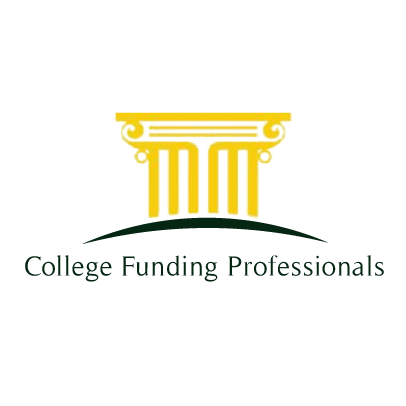College Funding
College funding could have many different definitions to many people depending on what stage you are in as it relates to the overall process. For the purpose of this post, we are going to break down college funding into two categories; early stage and late stage college funding. Early stage is referring to parents with children in the age range of 1-14 years old. At College Funding Professionals we refer to this as a “Pre-High School Parent”. The focus for this group is funding investments that will help them pay for college at a later date. That date could be anywhere from 17 years to 4 years depending on the age of your child.
Late stage is parents with a child who is currently in high school, most likely a junior or senior. They need to figure out how to pay for college in a short amount of time. This could be anywhere between 2 years to just a couple of months. We at College Funding Professionals refer to this group as “High School Parents”.
Many people use the words “College Funding” and “College Planning” interchangeably but we make a distinction between the two. We view College Planning as a much more comprehensive 30,000ft / 360 degree type view of paying for college. There are many moving parts that all come together in one way or another. Conversely, College Funding is isolating the investment and/or loans that a parent would utilize to pay their college tuition bill. It is a much more drilled down focused viewpoint than college planning.
Early Stage College Funding
So lets first start with exploring early stage college funding for Pre-High School parents. Again, there are other factors that would contribute to the decision making process. Such as what investment strategy is the right fit for you and your family. The most overlooked factor is college financial aid. Specifically, the impact it will eventually have on your out of pocket cost as a family. This is something that we explore in blog posts when we talk about college planning. This post we are analyzing some of the most effective investment strategies that a pre-high school family would utilize.
The rule of thumb is always do something never nothing. This means even starting with a very small amount of money is still better than do nothing at all. The biggest thing you need to guard against as a pre-high school parent is procrastination. We will expand on this topic of procrastination in other posts. Specifically, how waiting just a few years to start your college funding plan could have an enormous impact on the amount of money you can save. There is never going to be a perfect time to start a college fund. You might as well start as early as possible because the enormous advantage pre-high school parents have over high school parents is time. Referring to the amount of time the fund has to earn interest and grow. I cannot stress enough how important this point is.
Popular Funding Options
Once you have realized that now is the time to start saving for college you need to understand your options . We analyze each one of these options in detail in others posts. Below is a short list of the 5 most popular college saving strategies that we have seen parents utilize;
529 College Savings Plans
Coverdell Savings Account
702 Investment Contracts
UGMA / UTMA
401K / IRA
The first four options on the above list can be used at any time by pre-high school parents to fund college tuition. Just like any investment strategy there are pros and cons to each. As many investors know there is no such thing as the “perfect” option. The last option on the list is different from the rest because these are specifically retirement plans. They are not designed to be a funding source for college but we have seen some parents use them.
401k or IRA
A lot of parents who used their 401k or IRA as a funding source for college did so out of necessity. They already had a 401k/IRA and were making regular contributions. They did not have the additional funds to start stand alone strategies like the first four on the list. Conversely, some truly thought using their retirement account was the best option for their unique situation. The pros and cons of this including potential tax consequences is beyond the scope of this blog but something we cover in detail in our Virtual Counselor program.
529 Plans
The most popular strategy on the list is the 529 plan but that is neither an endorsement nor a representation of the best option as it will truly depend on your unique circumstances as a family. This is another very important point, just because something is popular does not automatically mean it’s the right fit for you. In reality, a blend of several different of the above referenced options is probably the best approach.
Late Stage College Funding
When discussing late stage college funding for those high school parents the conversation is much different. The main reason is the ultra valuable asset time is now no longer on your side compared to pre-high school parents. You’re either at or very close to the “finish line” so now you need to look at what resources you have in place and how to best use them. For the purpose of this discussion, we are assuming that you received some type of financial aid award. We will talk a great length about all aspects of the college financial aid system, including award letters, throughout this blog. You are now trying to find additional funds to bridge the gap between the financial aid award and family’s out of pocket cost.
Technically, you could start any of the first four strategies but most likely this is going to be a futile effort. Simply because you do not have the requisite amount of time for the fund to grow. There are two reasons why you might start one of these funds in the late stage: you have a large sum of money that you are going to use to fund these types of plans. Second, your investing philosophy is extremely aggressive. This could possibly generate an unusually high return on your investment in a short amount of time. The trade off though is a drastic increase in the risk of financial loss.
Exhausting All Resources
Conversely, if you did put one of the first four plans in place pre-high school this is going to be your first funding source you are going to look at and utilize. This is going to be your starting point because these plans were put in place specifically for your child’s college education and most likely will have extremely favorable tax treatments because of this fact. Once you exhaust these funds than your next course of action should be utilizing any money or funds that wasn’t specifically earmarked for college such as general savings and checking accounts.
A traditional example would be savings bonds that relatives might have purchased for your child. It goes without saying that you should never deplete general funds to the detriment of your retirement or everyday life. Remember, although not ideal when done in excess, you could always borrow for the cost of college. You cannot borrow to fund your retirement or day to day expenses as a family so use your best judgement when looking internally at your family finances.
If using your 401k or IRA was your funding choice this would be the time to execute on that decision by either borrowing against or just withdrawing from these accounts, this is something you should NEVER do without consulting a financial professional first. The negative to this is the fact that you are now affecting your own retirement by taking money out of these funds instead of borrowing the money so a decision such as this should be made with extreme caution and much discussion
Borrowing Options
The next and final option is borrowing the money you need. The rule of thumb is exhaust all other options before borrowing because obviously you will be paying, in the form of interest, on the amount you borrow. Over 4 years this amount could become substantial as we have seen play out with the student debt crisis currently affecting many American families. With that being said, there are 3 major resources you can borrow from and just like the funding strategies they are all different with pros and cons unique to each. Below is the list of borrowing sources;
Federal Government
State Government
Private Lenders
In the case of the Federal and State Government categories there are several different options. When it comes to private lenders there is literally hundreds of different options. The right choice will ultimately come down to the best fit for you and your family. When comparing most loans borrowers typically review the interest rate & term. With College loans you also need to consider who is borrowing, the parent or the student, and what is the consumer protection. Consumer protection is important due to the size and length of repayment on these loans. Knowing what happens in the case of late payments and/or defaulting becomes a critical part of the decision making process.
Strictly speaking from a consumer protection standpoint the Federal government is by far the best. Private lenders are the worst and state government options are somewhere in the middle. With that being said, the below videos are excerpts taking directly from our Virtual Counselor program. The videos further expand on the loans conversation;
Join our free online Facebook Group to gain access to the best college planning advice anywhere.



